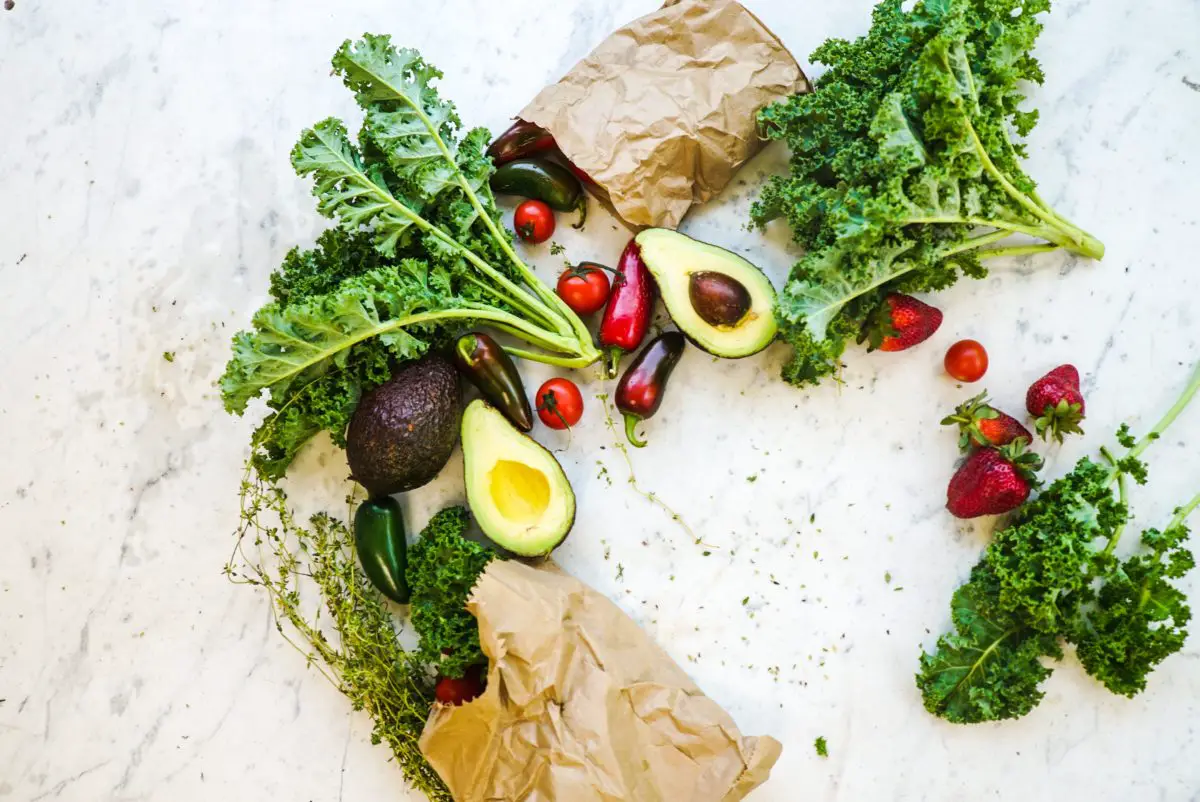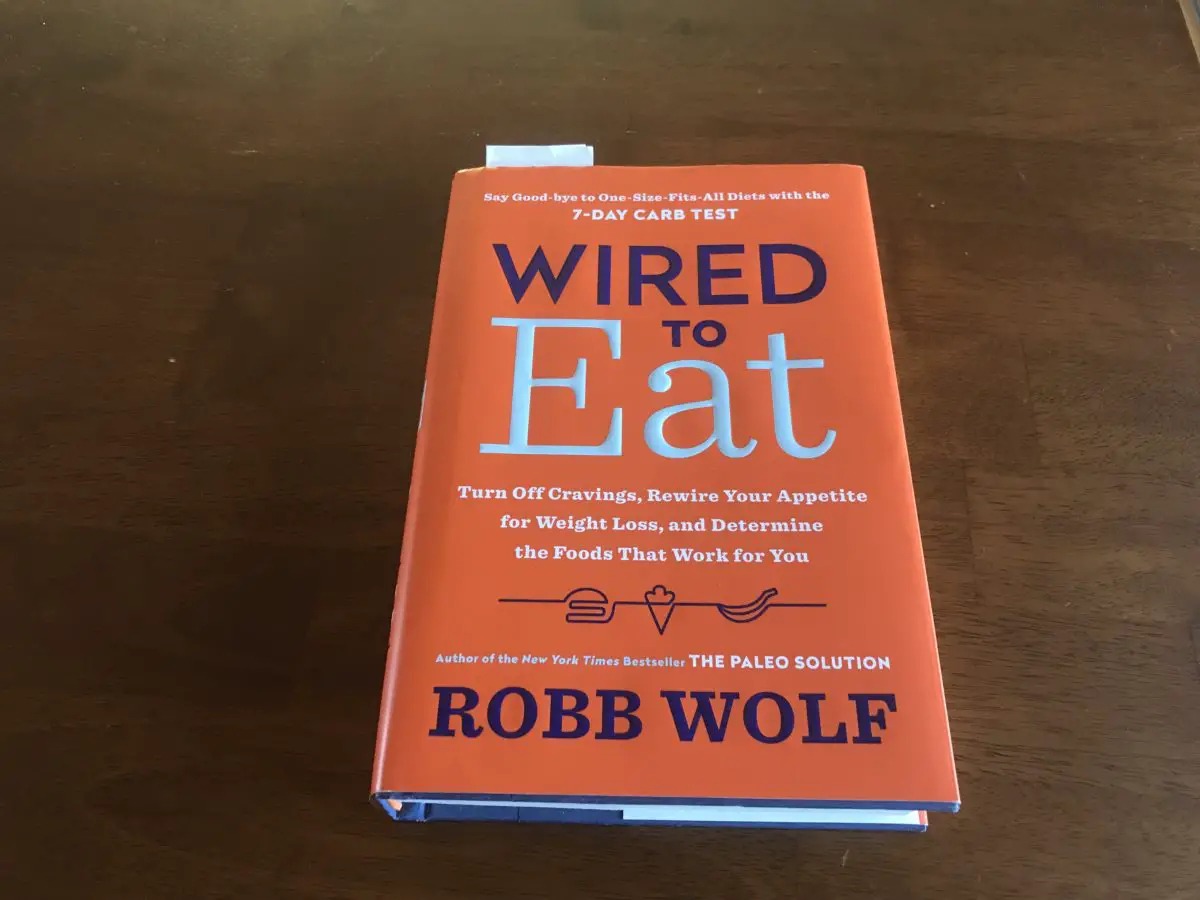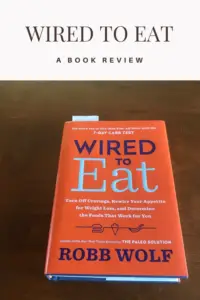Below are some Keto-friendly recipes I tried during my Low-Carb Lent a few years ago:
Stir-fry with Cauliflower Rice:
This was YUMMY! This was one of those recipes that isn’t really a recipe because you can pretty much throw whatever sounds good into it. You can even buy frozen, stir-fry mixes with the veggies already cut up (some of them have sauce packets too).
For veggies I used:
Green peppers
Onions
Mushrooms
Edamame
Corn
Canned bean sprouts
Water chestnuts
For the sauce, I used a Kikkoman stir-fry sauce, but again, you can use whatever you want. I’d recommend two bottles of it (though I made a huge pan and we had plenty leftover).
Also, drain the veggies and meat before you put the final dash of sauce on so it doesn’t water down the flavor of the sauce, or get too soupy. (I didn’t bother to read the directions on the bottle first. If I had, I would have cooked the meat in the sauce first so it had a stronger flavor. I’ll do that next time. According to the directions, you’re supposed to then remove the meat and cook the veggies in that sauce/meat-juice mixture. Then you can add a little more sauce if you want…but who reads directions? 😝)
For the meat you can, again, use whatever sounds good. I used steak strips, but you could do chicken, or pork, or shrimp (or a combo)!
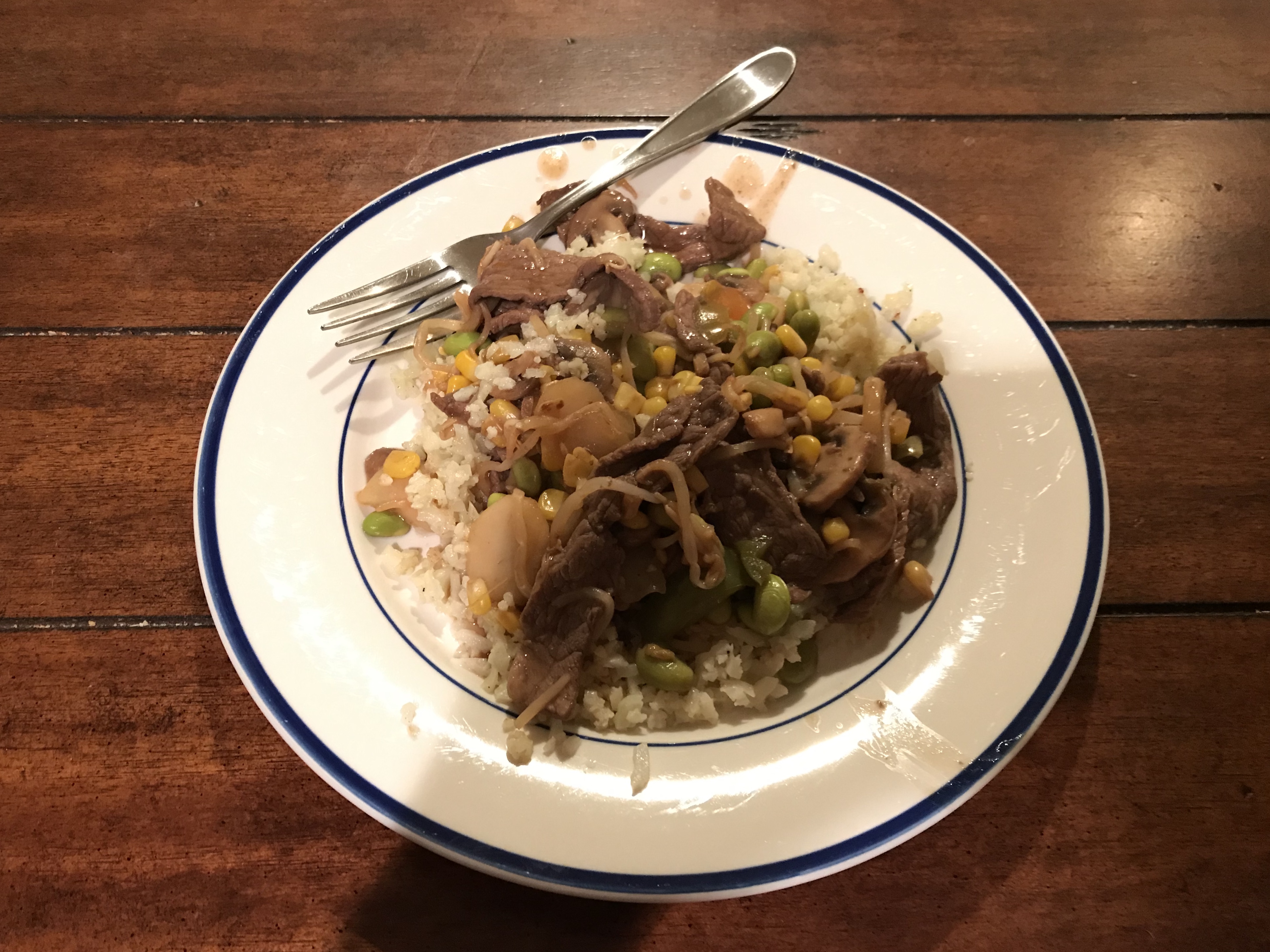
For the cauliflower rice, I just got a few bags, frozen, from Walmart. You can microwave them in the bag, though I sautéed them up in a skillet with some olive oil.
I was pleasantly surprised that the cauliflower didn’t stink when I cooked it (I was worried if it smelled strongly it would turn my stomach and that would ruin any chance of me liking the food. Since then, I have found the smell is stronger if you cook the bag in the microwave.)
The taste isn’t too strong either. You can definitely taste a little cauliflower, but it is mild. I wouldn’t want to eat it plain, but mixed with other foods, it was pretty good. I like the texture as well. It is a little more grainy than regular rice, a little firmer, but we both like our rice pretty chewy/al dente, so we don’t mind. If you’re used to eating brown or wild rice, which is firmer anyway, it isn’t too big of a change. We only needed one bag of cauliflower for the two of us, but we ate it all at that one meal.
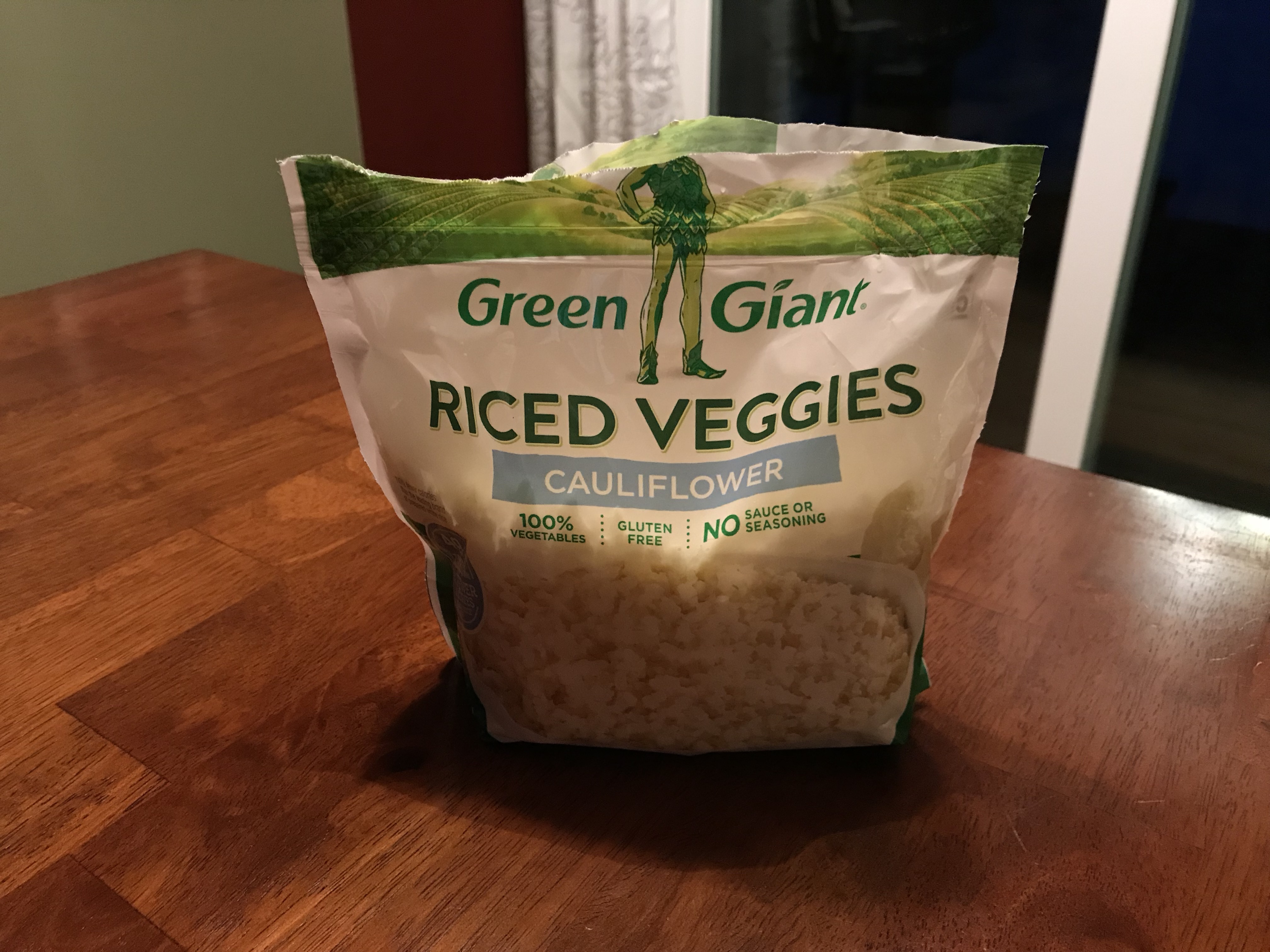
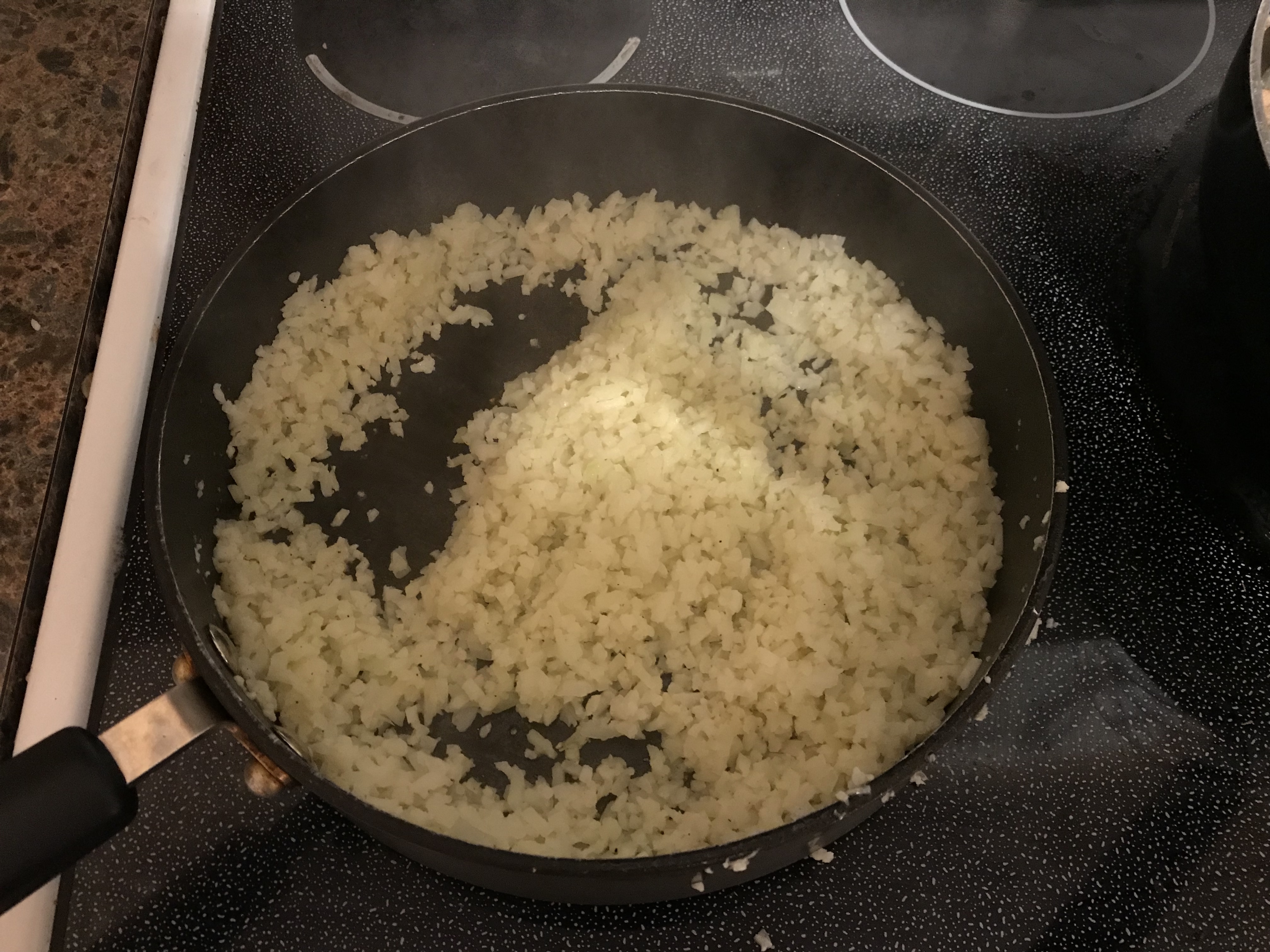
Broccoli and Cheese Veggie Tots
Another YUMMY choice! Full disclosure, I LOVE tater tots, L-O-V-E, LOVE them. But regular potatoes are kind of a no-no on a low-carb diet (one rule I’m only following when I feel like it 😝). So we tried these as a substitute. They are good! They are lightly breaded (I didn’t realize that till I was eating them, oops!), and since they contain cheese they would NOT be Paleo-friendly (meh!) Mr. Trekker doesn’t share my love of tater tots (though ironically, he likes potatoes WAY more than I do), so he was fine with these as an alternative.

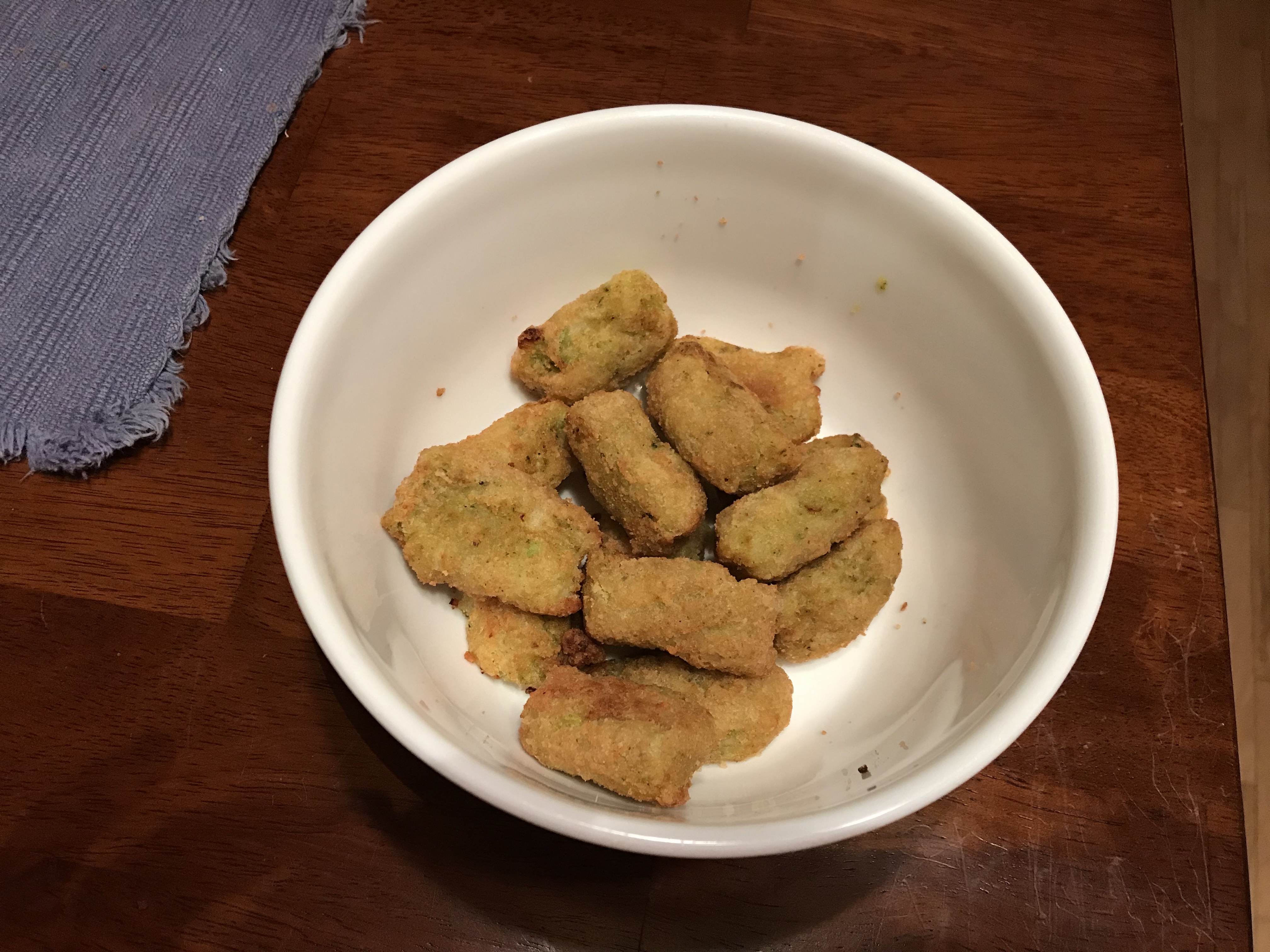
Related posts: Low-carb Lent; Yummy Low-Carb Foods; A Sustainable Low-carb Lifestyle; Final Thoughts on Low-Carb Lent
Rice Ramen:
We enjoyed this as well. They are ramen noodles, basically, but they had no salt as they’re just the straight noodle. You don’t add a packet of seasoning (you can add whatever sauce/toppings you want, they basically take on the flavor of that).
There are some carbs, but it’s about half of what you find in normal pasta. Also, these noodles are VERY filling, but in a satisfying way, not the airy, “white-carb” way that only leaves you feeling full for about five minutes. I was full all night after eating these and that’s unusual for me for a normal “spaghetti night”. I LOVE the texture on these, but then I LOVE ramen. 😝
Note: You have to be careful cooking these noodles, there’s about a 30-second, Goldilocks-style difference between too hard, PERFECT, and too mushy.
There are several varieties, but the one I prefer is a combination of brown rice flour and millet. We both really liked it. We tried them with alfredo sauce, broccoli, and chicken; with just regular Italian dressing; and with regular “red” sauce. All were good, though the lighter the sauce flavor, the duller the flavor of the dish, so I would definitely recommend something more flavorful. This type of noodle reminds me a lot of angel-hair pasta, which is one of my favorites!

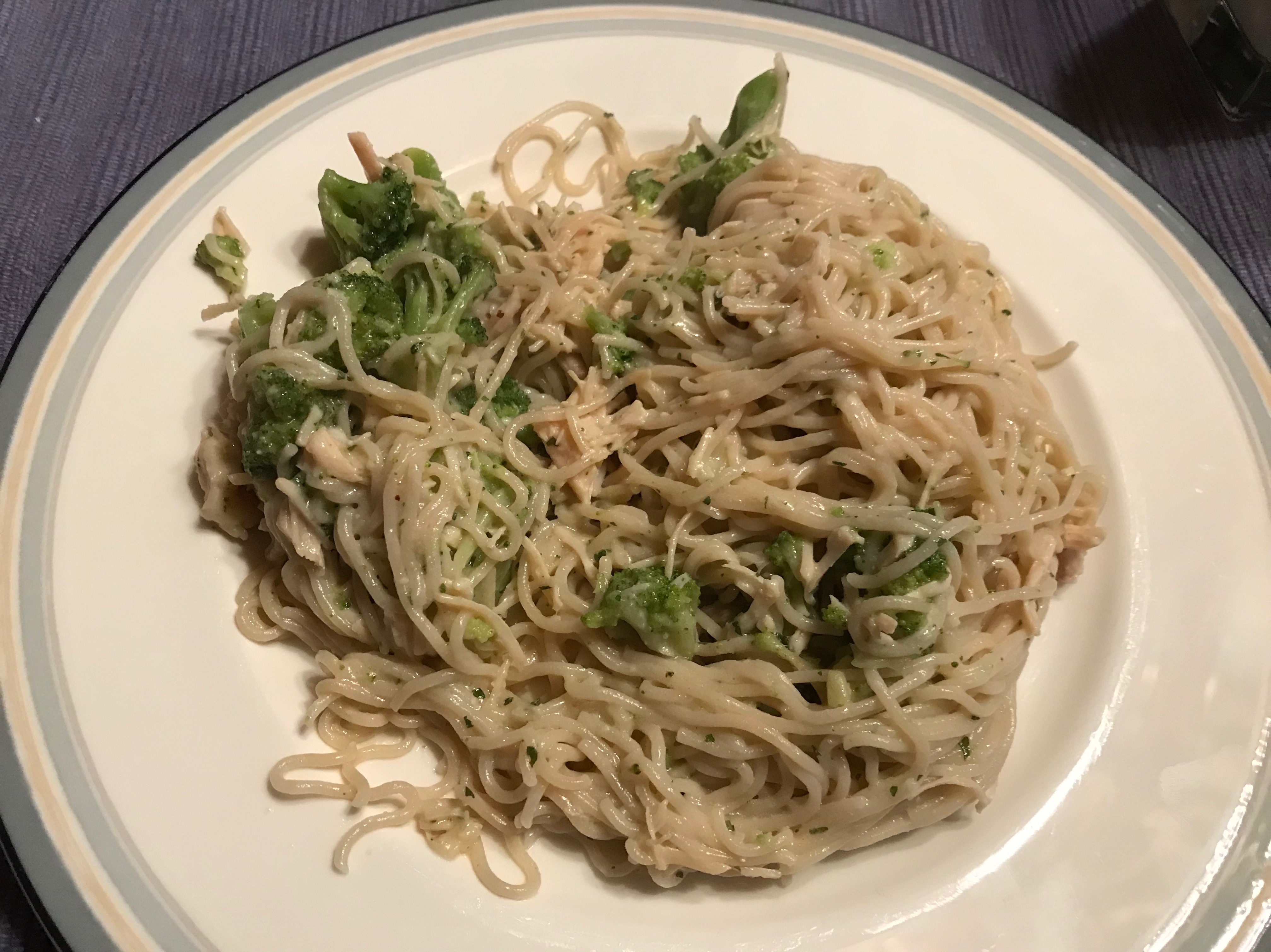
Pizza with Cauliflower Crust:
This one was easy, we got it from a local pizza place. 😉 It was also, surprisingly good (albeit expensive). The texture was a little different from that of a normal pizza crust. It was a little denser and chewier, but I liked it! Mr. Trekker liked it too!
If I hadn’t known I was eating something different, I don’t even know if I would have noticed. There was no flavor difference that I could tell. I had buffalo chicken pizza, so that may have helped. This pizzeria also offers garlic-cheese “breadsticks” with a cauliflower crust. I wouldn’t mind trying that sometime as well, just to see if the taste of the crust is any more noticeable.
I did find this didn’t reheat well. The crust got very dark and hard. It wasn’t inedible, but it also wasn’t nearly as tasty as it had been the night before. Aside from the exorbitant cost, this is definitely something I’d be willing to try again!
Side Effects of a Low-carb Diet:
A few things I’ve noticed while trying out a low-carb diet:
-
-
- I noticed a bit of nausea and queasiness when I would get hungry (usually close to meal-time). My understanding is, this comes from low blood sugar and isn’t unusual for people switching to a low-carb lifestyle. The answer seems to be, “eat more protein”. I found that a handful of nuts or a granola bar when I first felt it coming on usually solved the problem.
- In the past, when I stopped eating sweets for Lent, I’ve experienced strong cravings for carbs. This makes sense as my body was seeking out alternative sources of sugar for fuel. I was pleasantly surprised this didn’t seem to be the case when I went “low-carb”. I assume this was because I had already decreased my carb intake, so my body was learning to seek out protein for energy instead?I did crave proteins, specifically beef, as well as salt. My understanding is, the salt cravings are also normal. The answer (again) seems to be, “eat more protein”, and increase your salt intake (seriously). It has something to do with your electrolytes being out of whack due to the lack of carbs.Apparently, on a low-carb diet, your liver and kidneys flush more salt rather than store it, so it’s normal to need to refresh the supply more readily. I found, if I had a particularly strong craving, just a small pinch of salt really helped (also it was INCREDIBLY satisfying).
- The first week or two of the diet I noticed increased irritability (Mr. Trekker did not comment on this, he is a wise, wise man 😂). It almost felt like I was suffering from PMS, even though I knew that wasn’t likely the culprit (that explanation won’t help the male readers much. 😝) Again, based on research I’ve done, it appears this is a normal part of the transition, as your body learns to use different fuel sources. It seemed to ebb after the first few weeks.
- I struggled to feel satisfyingly full. I’ve noticed this in the past as well, just from giving up sweets, but really cutting back the carbs increased the issue (and may have contributed to the irritability). Eating protein-rich snacks, such as nuts, really helped, and I’m tried to increase my veggie and fruit intake. (You have to be careful with fruit though, as it does contain carbs, from the natural sugar. I noted in a previous post that I didn’t worry myself as much with those types of carbs.).Eating more veggies is probably the best answer, but as I’ve mentioned before, neither my palate nor my gag reflex has a love affair with vegetables, especially the green ones. I keep finding more that I enjoy, and I keep seeking out new ways to prepare others to help me learn to tolerate them.
- I rarely felt “stuffed” when I ate fewer carbs. I have definitely noticed a difference in how I feel based on what I eat. When I eat more “white” carbs, or more carb-heavy, rather than protein-heavy, I feel different. It’s like you feel full, but not satisfyingly full. You feel bloated, almost like there’s too much air inside you rather than actual substance. Whereas when I fill up more on protein or at least the whole-grain carbs that digest more slowly, I feel satisfyingly full. I thought that was interesting.
-
In the book, Wired to Eat, that sparked my interest in this diet, to begin with, the author believes it can be beneficial for us to feel hunger at times. This is because our bodies evolved in an era where missing meals was relatively common. This was due to a lack of easily available food, thanks to the situations our ancestors found themselves in (famine, an unsuccessful hunt or lousy harvest, etc.)
Yeah, that’s all well and good for him, but I don’t do “hungry” well. I get cranky easily. 😇 And this isn’t 2000 BC, we have grocery stores and Uber Eats. For the safety and sanity of everyone in my general vicinity, it’s best if I eat every three hours (not counting the 12-hour fasting break I take while I sleep). 😝
The author of the book also feels there is no such thing as “cheating” on a diet because you don’t have a relationship with your food. I think this is a very healthy way to look at the issue. Either you eat according to your diet or you don’t. If you don’t, and you feel “guilt” about it, use those negative feelings as motivation to make better food choices the next time around. (Although in my case, I followed the diet as part of the religious tradition of sacrificing something for Lent. So, I may not have cheated on my diet, I just cheating on God. That makes me feel SO much better! 😳🤔😔)
Do you have any favorite low-carb foods? Tell me about them in the comments!
Did you enjoy this post? Pin it!
Like what you read here today? Please feel free to leave a comment, like or share this post! Add your email at the bottom of the page, or the sidebar to the right, to be notified when a new post is published. By signing up for the email list, you will also receive a free copy of the Tranquil Trekker’s Top 10 Tips of Trekking Do’s and Don’ts!
You can also follow the blog on social media by clicking the links below!
